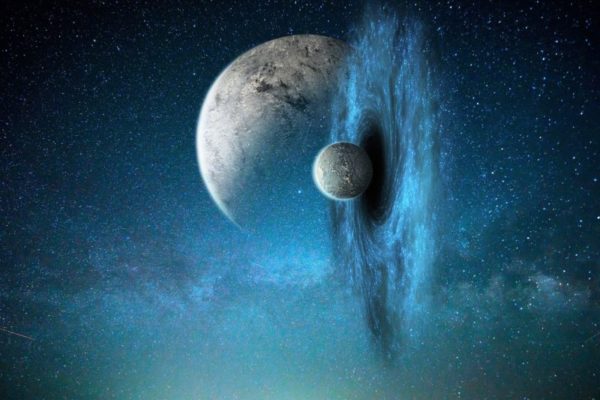Welcome to the latest installment of “Writer Fuel – cool real-world stories that might inspire your little writer heart. Check out our Writer Fuel page on the LimFic blog for more inspiration. Today:
A wormhole is a special solution to the equations describing Einstein’s theory of general relativity that connects two distant points in space or time via a tunnel. Ideally, the length of this tunnel is shorter than the distance between those two points, making the wormhole a kind of shortcut. Though they are a staple of science fiction and have captured the popular imagination, wormholes are, as far as we know, only hypothetical. They are legitimate solutions to general relativity, but scientists have never figured out a way to maintain a stable wormhole in the real universe.
The simplest possible wormhole solution was discovered by Albert Einstein and Nathan Rosen in 1935, which is why wormholes are sometimes called “Einstein-Rosen bridges.” Einstein and Rosen started with the mathematical solution of a black hole, which consists of a singularity (a point of infinite density) and an event horizon (a region surrounding that singularity beyond which nothing can escape). According to The Physics of the Universe, they found that they could extend this solution to include the polar opposite of black holes: white holes.
These hypothetical white holes also contain a singularity, but they operate in reverse to a black hole: Nothing can enter the event horizon of a white hole, and any material inside the white hole gets ejected immediately.


